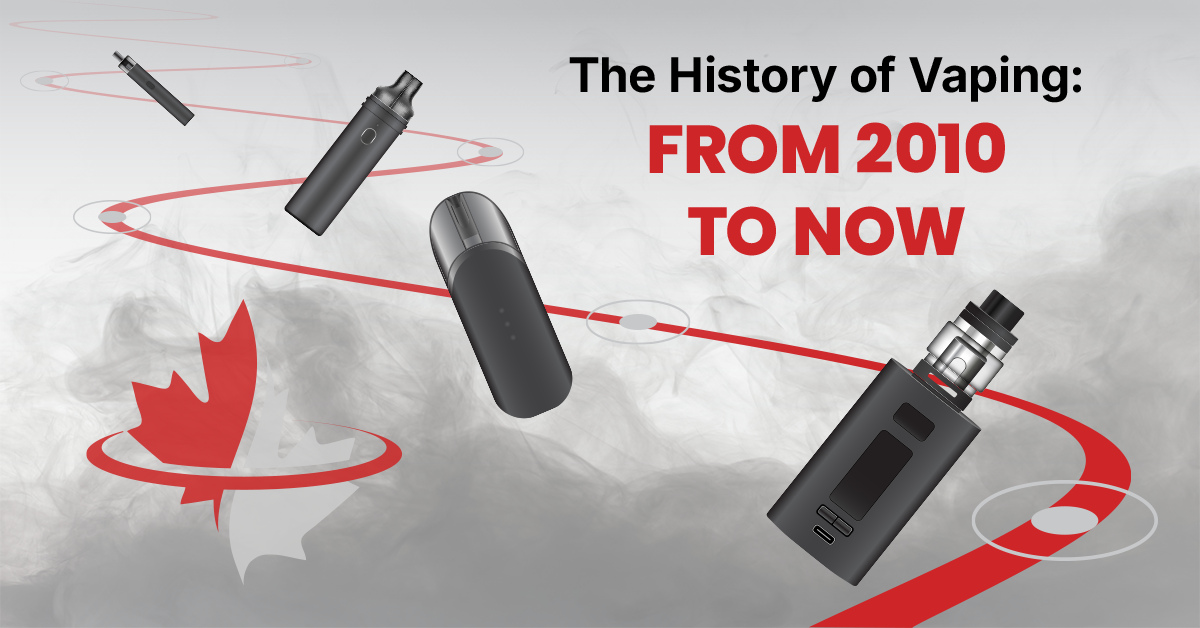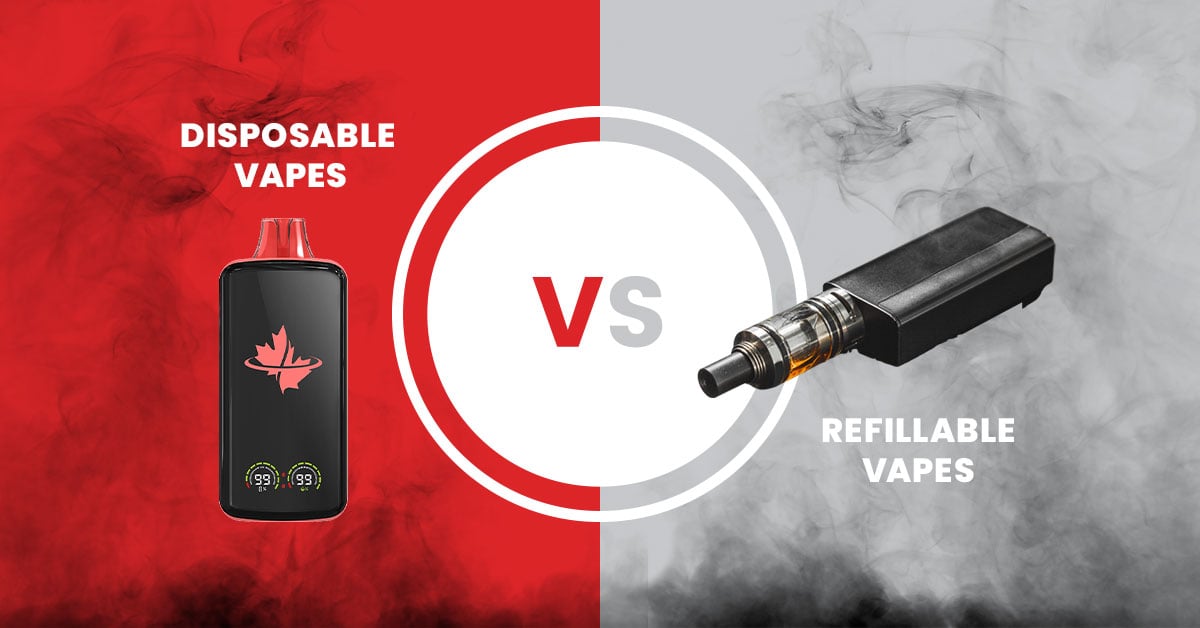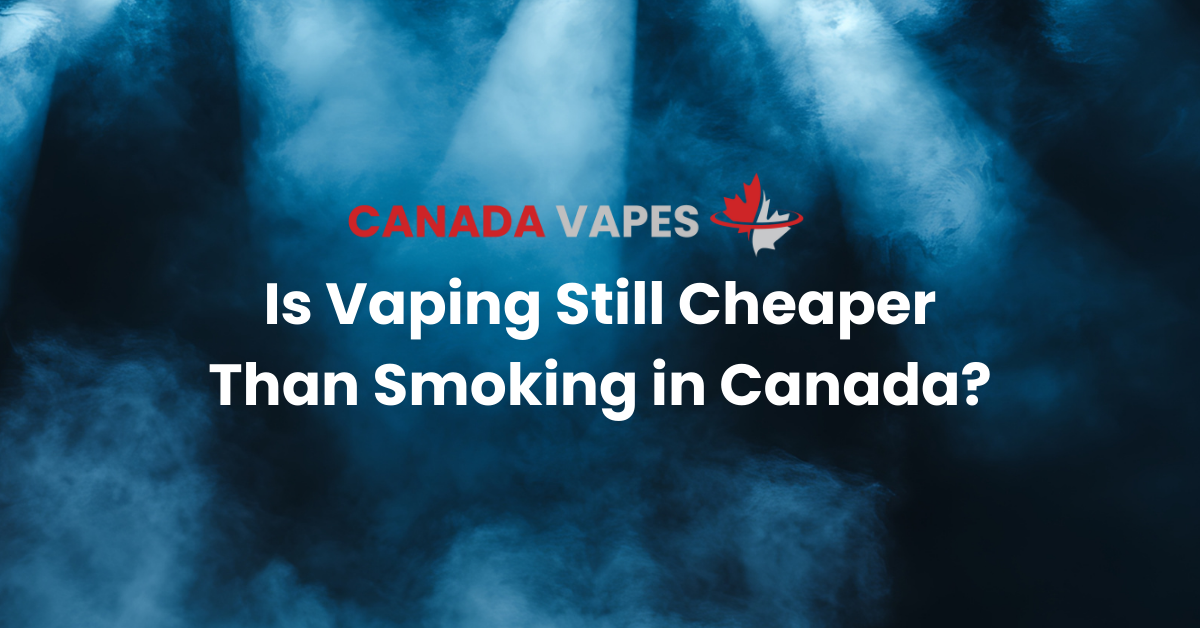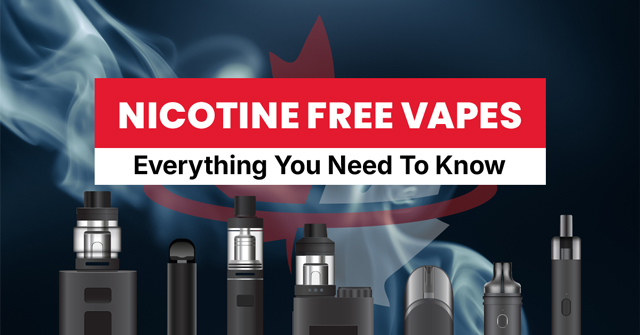Vaping did not appear overnight. It moved from early sketches to a real device, then into a hobby scene, and finally into simple pods, mods, and disposables for daily carry. This History of Vaping guide walks through the key moments that defined vaping in Canada, the vape laws that shape the Canadian market, and where Canada Vapes fits.
TLDR;
- Early “smokeless” ideas sat on paper until tech caught up in the 1990s.
- The modern e-cigarette dates to 2003 with Hon Lik’s design that heated a liquid to make vapour.
- Mods and rebuildables led the scene from 2007 to 2012, with a strong DIY culture.
- 2015–2018 brought pods and nicotine salts that felt satisfying at low power. JUUL’s 2015 launch popularised the format.
- Canada set a national framework with the TVPA in 2018, and capped nicotine at 20 mg/mL in 2021.
- Canada Vapes started in 2010 and moved fully online in 2014 to serve adult Canadians coast to coast.
Every major shift in vaping came from one of two forces: a new idea or a new rule.
Before the Modern E-Cigarette: 1960s to 1990s
People imagined “smokeless” devices long before vapes. The idea was clear. Make something small, pocketable, and cleaner to use. But, the problem was tech. Early batteries were weak. The heating parts were clunky. Materials could not handle heat well. Many concepts stayed in patent files.
In 1963, inventor Herbert A. Gilbert filed a patent for a smokeless, non-tobacco cigarette that heated a flavoured liquid. It was never mass-produced, but the blueprint looked a lot like what we use now. His design is the stepping stone in the history of vaping.
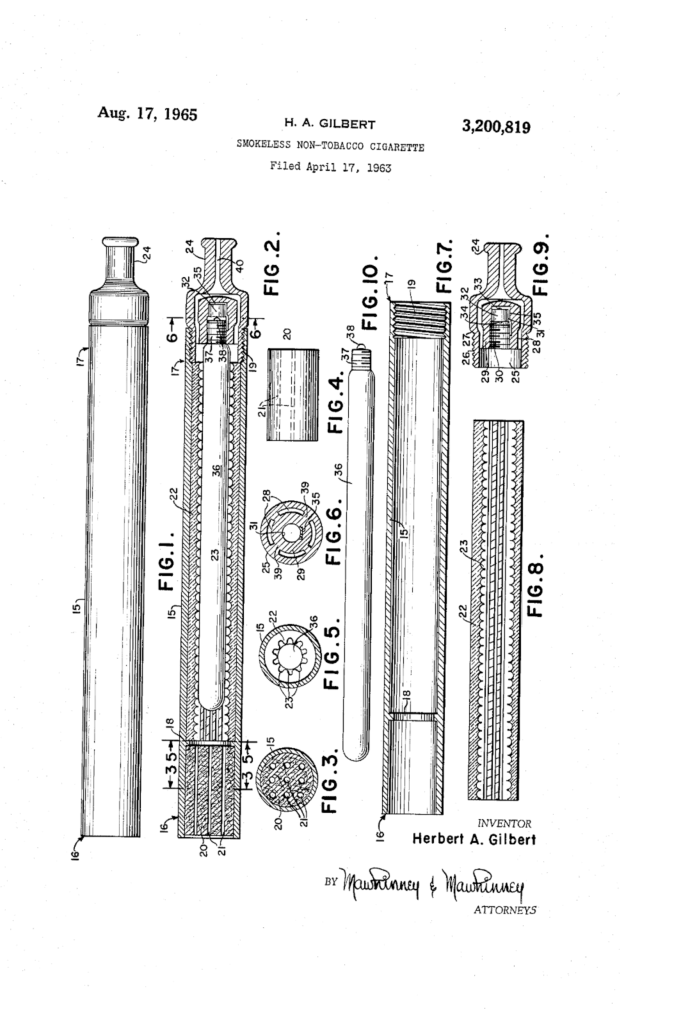
By the late 1970s, clinician Dr. Norman Jacobson worked on a “smokeless cigarette” concept and used the word vaping in early discussions. The tech was not ready for everyday use, but the language and the goal were already on the table.
By the late 1990s, things changed. Phones got smaller. Chips got smarter. Battery chemistry improved. Better plastics and metals arrived. A handheld vapour device moved from “nice thought” to “we can build this.”
The Modern Spark: Hon Lik in 2003
In 2003, Chinese pharmacist Hon Lik built a device that actually worked in the real world. It used a heater and a liquid base wicked to the coil. It was small enough to carry and quick to use. The first products appeared in China, then abroad. This is widely seen as the start of modern vaping.
You can learn more about Hon Lik’s design on the official US Patent No. US8393331B2
Soon after that design, Chinese company Ruyan brought early commercial e-cigarettes to market in 2004, pushing the idea into real retail channels.
Mods and Hobby Culture: 2007 to 2012
After the first “cig-a-like” sticks, tinkerers took over. Tube mods and then box mods arrived. Rebuildable atomizers let people swap coils and try different wicks. Forums were busy. Reviewers posted how-tos. E-liquid recipes spread. PG and VG ratios became part of normal talk.
There was also a big surge of Mechanical Mods among vape enthusiasts. Mechanical mods were simple metal tubes or boxes with no chip inside. No screen. No power settings. When you pressed the switch, the battery sent power straight to the coil. That was it. It was a good option as a mod at the time, but there were numerous safety concerns.
It felt like a friendly garage scene. Some adults loved the hands-on control. Others wanted less fuss. That tension set the stage for the next phase.
By 2006, products had reached Europe and the U.S., which helped the global vaping scene explode.
Canada Vapes Enters the Scene: 2010
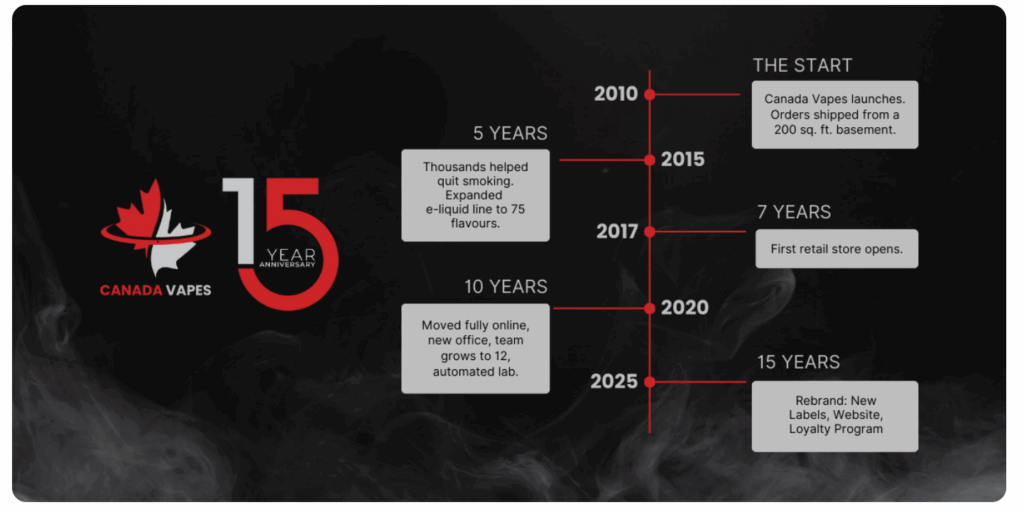
Canada Vapes was founded in 2010 as an online shop operating out of a 200 sq. ft. basement. The mission was simple. Make it easy for adult Canadians to buy genuine hardware and e-liquids with clear guidance. By 2015, the catalogue had grown across Canada, and the in-house e-liquid line reached 75 flavours. In 2017, the first retail store opened to complement the online service, providing local adults with a place to see devices in person and receive quick assistance.
By 2020, operations shifted fully online with a new office, a team of 12, and an automated lab to support consistent quality and faster shipping. In 2025, the brand refreshed its look with new labels, a new website, and a customer loyalty program. Through each stage, the focus stayed steady. Keep the experience simple, compliant, and helpful for adult Canadians shopping for vaping products.
That online model, right from the start, helped set expectations for what the best online vape shop in Canada should feel like. Clear product pages. Coil and pod compatibility explained. Basic how-to guides beside the items. Responsible age checks as rules evolved. A focus on genuine hardware and steady support so adults did not have to guess.
Pods and Nicotine Salts Change the Feel: 2015 to 2018
In 2015, pods began to really take off. Nicotine salts made higher strengths feel smoother at a low power. Small devices suddenly felt satisfying for mouth-to-lung draws. The format became popular after JUUL’s 2015 launch, and the idea spread to other brands. Pods were easy to fill, easy to carry, and easy to maintain.
Canada Vapes stocks one of the best Canadian-made Nic Salts collections in Canada.
The Health Canada Framework Arrives: 2018 to 2021
Canada has a national framework that sets how products are made, labelled, and promoted, plus a 20 mg/mL nicotine cap. Provinces add their own rules for flavours and retail practices. This creates a clear baseline with local differences. If you are unsure, check the latest federal vaping laws and your province’s page before you buy.
2018: The Tobacco and Vaping Products Act (TVPA) set federal rules for making, selling, labelling, and promoting vaping products in Canada.
2021: Canada introduced the Nicotine Concentration in Vaping Products Regulations, which set a maximum of 20 mg/mL for products made or imported for sale in Canada. That cap is part of the national baseline adults see in stores and online.
Promotion rules also say ads must not be seen or heard by young persons, which changed how retailers design websites and marketing.
Disposables and the 2020s Reset
In the 2020s, disposable vapes surged. Mesh coils and better batteries made them feel consistent. Open the box and it just works. That convenience clicked for many adults.
At the same time, pods kept levelling up. Fewer leaks. Clearer juice windows. Brighter screens. Simpler menus. If you want grab-and-go, disposables exist. If you want control and lower long-term cost, pods are still the smarter daily driver. Provincial flavour rules also changed what adults saw on shelves, so selection can differ by region. (Always check your province’s page before you buy.)
Here are the vaping laws in all 13 Canadian provinces, outlining the dos and don’ts.
Hardware Today: What Stayed and What Changed
What stayed
- Tight MTL pods remain the daily pick for many adults.
- Open systems still serve people who like to tinker and run lower strengths.
- Basics win. Good wicks, clean airflow, smart power.
What changed
- Better seals and pod construction mean fewer messes.
- Smart chips hold output steadier as the battery drops.
- USB-C is common. Screens are clearer. Menus are simple.
In short, the gear grew up. You can keep it dead simple, or dial it in. Your call.
Canada Vapes Now
Canada Vapes still follows the same playbook. Keep it compliant. Keep it helpful. Keep it Canadian. We carry trusted brands, clear product pages, and quick tips that cut the learning curve. Need a starter pod? You will find it. Need coils or a specific ratio? You will find those too. Questions? You get a straight answer from someone who actually uses the gear. At Canada Vapes, all of our E-Liquids are created in-house with premium ingredients and in a certified lab.
That is the thread from 2010 to today. Make vaping simpler for adults. Keep information honest. Ship fast. Stand behind what you sell.
FAQs
Who invented the modern e-cigarette?
Hon Lik is widely credited with a working design in 2003 that set today’s pattern.
When did pod systems take off?
Mid-2010s, when nicotine salts made small, low-power devices feel satisfying. JUUL’s 2015 launch popularised the format.
Why does Canada cap nicotine at 20 mg/mL?
It is part of federal regulations for vaping products sold in Canada. Retailers and brands must follow the cap.
Do PG and VG change how a vape feels?
Yes. PG is thinner and adds more throat feel. VG is thicker and feels smoother. Most modern e-liquids blend both.
Sources and Further Reading
- Health Canada: Regulating tobacco and vaping products (TVPA overview). Government of Canada
- Health Canada: Vaping products regulations — Nicotine concentration 20 mg/mL. Government of Canada
- Justice Laws: Nicotine Concentration in Vaping Products Regulations (SOR/2021-123). Justice Laws
- Hon Lik and the 2003 modern e-cigarette. Wikipedia
JUUL’s 2015 launch and the rise of salt-based pods. Ethics in Society
